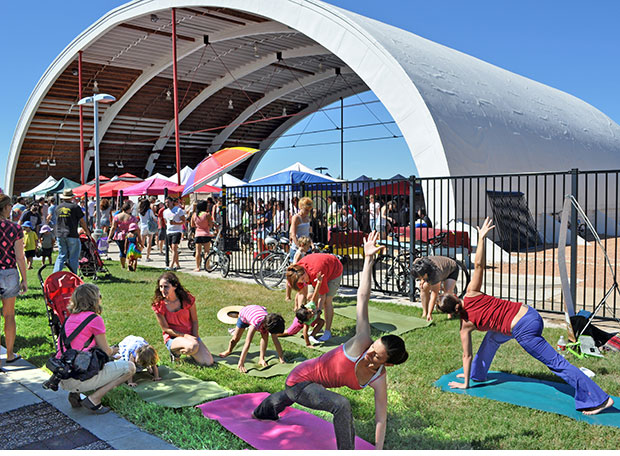Effect of built environment on health examined in $2.6M study

Chanam Lee

Xuemei Zhu

Marcia Ory
By RAE LYNN MITCHELL
Texas A&M Health Science Center
School of Public Health
Can moving to an activity-friendly neighborhood enhance the health of previously sedentary residents? That’s one of many questions at the intersection of public health and the built environment to be considered by Texas A&M researchers in a $2.7 million National Institutes of Health active living study.
Researchers will examine how an activity-friendly community that embodies the best practices in environmental design and policy can increase residents’ levels of physical activity and influence when and where they are physically active. It will also provide insights into why environmental and psychosocial factors influence physical activity, and how place impacts lifestyle behaviors related to the burden of obesity.
“Neighborhoods that are designed with health and wellness as integral parts of the communities have been shown to effect both the physical activity and mental health of residents,” said Regents and Distinguished Professor Marcia Ory, Ph.D., of the Texas A&M Health Science Center School of Public Health, and one of three lead researchers involved in the multi-million dollar research study.
Ory will work with Chanam Lee, professor of [landscape architecture] (http://laup.arch.tamu.edu/) , and Xuemei Zhu, associate professor of [architecture] (http://dept.arch.tamu.edu/) , and in studying 350 adults who have previously been insufficiently active who move into Mueller, a planned activity-friendly community located in Austin, Texas from a less activity-friendly neighborhood.
Researchers will examine both short- and long-term changes in residents’ activity levels in the activity-friendly community and determine what built and natural environmental factors (e.g. sidewalks, walking/hiking paths, water features and parks) lead to changes in physical activity. Health comparisons will be evaluated between those living in an active-friendly community and those not.
“Study participants will complete surveys and wear accelerometers and global positioning system units, which will allow us to clearly determine how active they are, and when and where they are active,” Lee said. “Through these measures, we will be able to isolate the roles of neighborhood environments in fostering or deterring active living.”
“Mueller is a planned urban community that features compact and mixed land uses, diverse everyday destinations, well-connected street systems, sufficient pedestrian/bicyclist infrastructure, and accessible parks and open spaces,” Zhu said. “A previous pilot study showed increases in residents’ physical activity and ‘neighborly’ interactions. We are hoping this new longitudinal, case-comparison study will allow us to better understand what impact Mueller has on its residents’ physical activity and health, and more importantly, how this impact is facilitated by design.”
Greg Weaver, executive vice president of Catellus Development Corporation, the master developer of the Mueller community, recognizes the increasing demand for sustainable, mixed-use developments and that an important goal of the community design was to promote walking, biking and other physical activity to improve the overall health among residents.
“An activity-friendly community can make it easy to integrate physical activity into people’s daily routines, which can help people make important healthy changes,” Weaver said.
This study is an example of a strong university-community partnership and multi-disciplinary collaboration. It represents an initial research effort generated by the University-funded Coalition for Healthy Active Living. In addition to the lead researchers, the team includes other Texas A&M representatives from public health (Samuel Towne, Lisako McKyer and Debra Kellstedt), architecture (Zhipeng Lu), computer sciences (Tracy Hammond), geography (Daniel Goldberg), statistics (Huiyan Sang) and education (Timothy Lightfoot).
“Through this study we hope to identify stronger evidence supporting the impact of these types of communities on population-level behavior change toward more physically active lifestyles and toward lessening the burden of obesity throughout the nation,” Ory said.
Tags
- archone gallery
- building a better texas
- chsd gallery
- coa gallery
- health systems & design
- interdisciplinary
- landscape architecture & urban planning
- laup gallery
- research
- research gallery
- rss
- wellness
Related Posts

Zhu heading physical activity study project

CHSD selected for prestigious AIA research consortium

Study shows more physical activity in Austin development

Donated nature area will serve LAUP as 'living' classroom

Student writes healing garden design book
Follow Us
Facebook Twitter Vimeo Youtube Flickr RSS
Recent Posts

Planning prof heads study of disaster housing aid

A message from the dean

Former student remembered as expert planner

Leading educator named new head of Architecture Dept.





_thumbnail_small.png)
